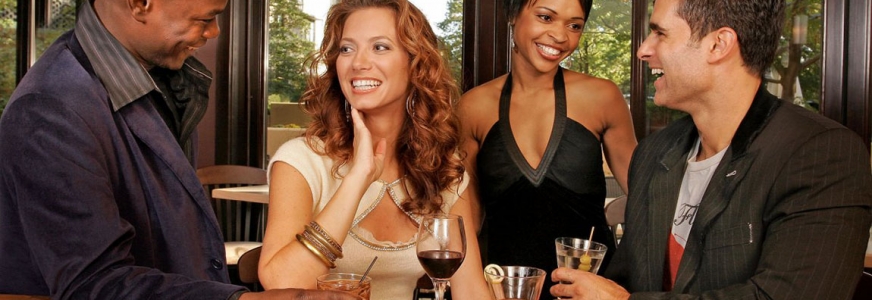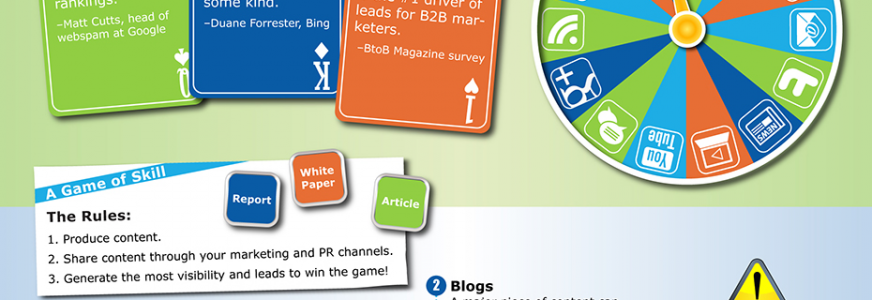
PART 2: DISCOVERING TOPIC INFLUENCE, AND WHY IT MATTERS
[NOTE: This is Part 2 of a multi-part series. Read Part 1 HERE]

It was an easy first step that happened a few years back. “Show me the top-25 most influential people in <whatever>.” The lists proliferated. They were considered important. And controversial. And they got a lot of clicks. We liked these lists because someone had taken the time to wade through all the data to tell us who’s important — and in a specific topic space. And of course as soon as they were published there were a ton of posts about why the list was wrong, not to mention all the tirades from people that were wronged by the list.
Due to the search terms, there are, without a doubt, very smart, talented (dare I say “influential”?) people who are not on this list. And, from a search perspective, we thought that might be somewhat enlightening. If someone knew nothing about our community, what terms might they use to search for social media professionals, and, what would they find?
– Jen Kane – Author of The Twin Cities’ Top 25 Most Influential Social Media Professionals on Twitter, 2010
How were those lists made? Easily. First, you look at how often someone is talking about a given topic. Then you factor in their reach and resonance. From that, you can devise a score.
Then again, while it seems simple, that “equation” includes factors that take some doing to quantify. For example:
- “talking about a given topic” needs to look at both social snaps, such as Tweets, along with the content being shared in the Tweet/Post.
- “reach and resonance” are measures about the size of the person’s audience and how engaged the audience is in amplifying the message as measured by re-Tweets, for example.
- “devise a score” means to combine all of those factors in a weighted mathematical formula that captures the important measures available.
Then you just create a list sorted by score — high to low — and publish it.
Top-25 Hits Bottom. The biggest issue with Top-25 lists is that they are always talking about the past. They measure a period of time, usually six-to-twelve months back. Then they need to identify topics the author thinks represents the influencer’s space. Topics were usually merged to simplify the work. The result was this:
Who used to be influential on this subset of the topics I could think of?
Note the past tense. Not very useful, especially as even more time passed. People were missed, and conversations changed usually introducing new topics and abandoning old ones.
Real-Time Topic-Based Influence Analysis. Promoting content as part of a content marketing strategy was becoming increasingly competitive. When SocialEars began analyzing influence in 2012 answering the question “who’s saying what?” the purpose was clear:
Show me who’s talking about my interests,
show me the most influential people involved in those discussions,
and let me join their conversations.
But in meeting that objective, something became very clear: We needed to find influencers talking about a specific topic and talking about it now. We called it topic influence. That list needed to be updated in real-time, and those no longer active in the topic space needed to be filtered out.

The Cocktail Party.The analogy we use when talking about content-oriented social marketing is the cocktail party. When you walk into a cocktail party, you scan the crowd for friends, acquaintances, and important people. If you’re there to unwind it’s friends you’re seeking.
But if you have a specific business purpose — getting a product reviewed or a business idea financed — you scan for the influencers. The conversations are vibrant. They’re real-time. They’re fluid.
Who might have been important a little ago changes — to who’s important right now. It’s this dynamism of human behavior that both makes life interesting and makes marketing a challenge in today’s world. If you don’t keep up, you’re doomed. Since your conversation is based on your content, your content not only needs to be engaging — it needs to keep up with the ongoing conversation as well.
Pace Accelerates. Social Media has revved the ups and downs of influence. Information velocity also affects the value of influence. So someone’s standing can change day-to-day — or in even shorter cycles if it’s a breaking topic. We can’t rely on backward-looking lists . We need new modern tools to measure influence in real-time. SocialEars is one such tool. And, yes, there are others. But any tool you use must:
- Scan the major social networks continuously
- Update incrementally as new influencers are discovered
- Provide real-time ranking of former and present influencers to allow focus
- Provide full profiles of the influencers to allow you to connect
By using modern real-time influence identification and analysis tools you can focus efforts and get your message out.
Growing the Audience. Likely the subject of another blog post is how to leverage influencers, especially the newest and most eager, and how to build an audience for you. Here’s a preview…
The cocktail party analogy has evolved into methods to build audiences around these influencers. Social Media provides a wealth of methods to get introductions, from getting re-Tweeted to commenting on a top influencer’s blog post. This is just like getting an introduction from a friend or tapping someone on the shoulder at the right time.
The key to utilizing someone else’s blog post is to be the first one to
comment. That way other readers see your (hopefully) insightful
comment, will learn your name, and might even post a reply
extending the discussion. The only sure way to be first to comment is
to use a real-time Social Analytics tool such as SocialEars to see
What’s Hot and getting to the front of the line.
Was this blog post helpful? Let me know by posting a comment below.



